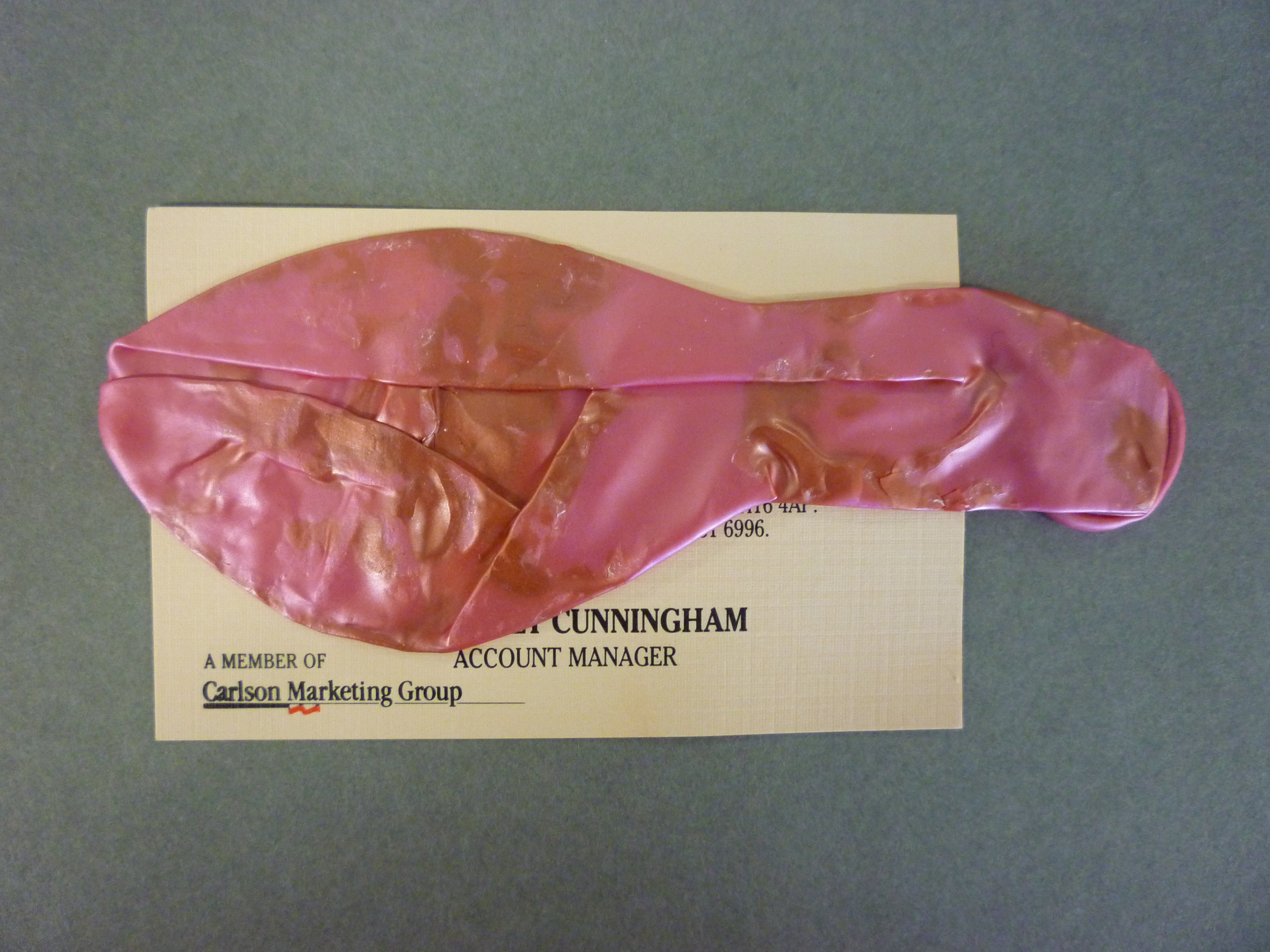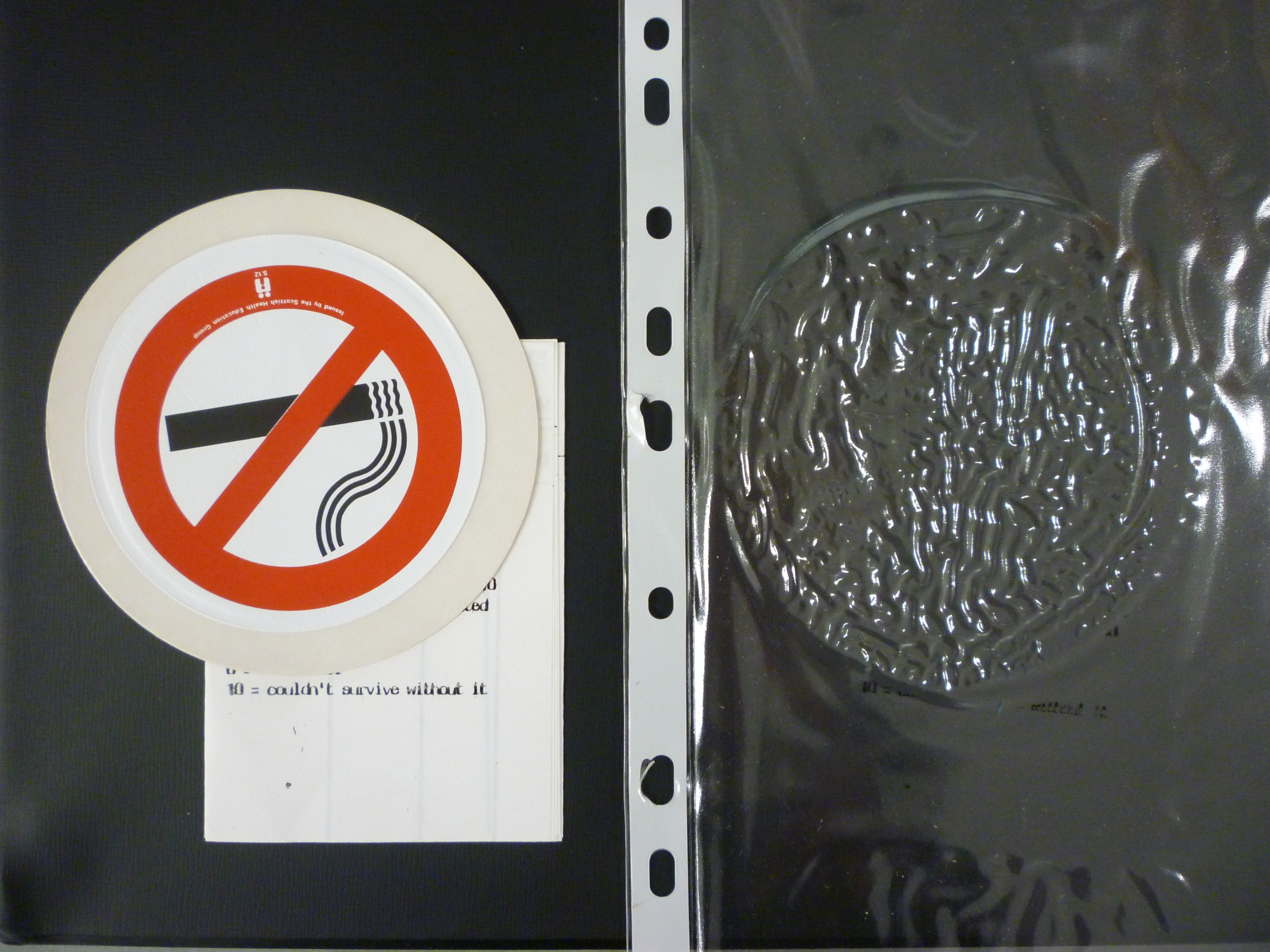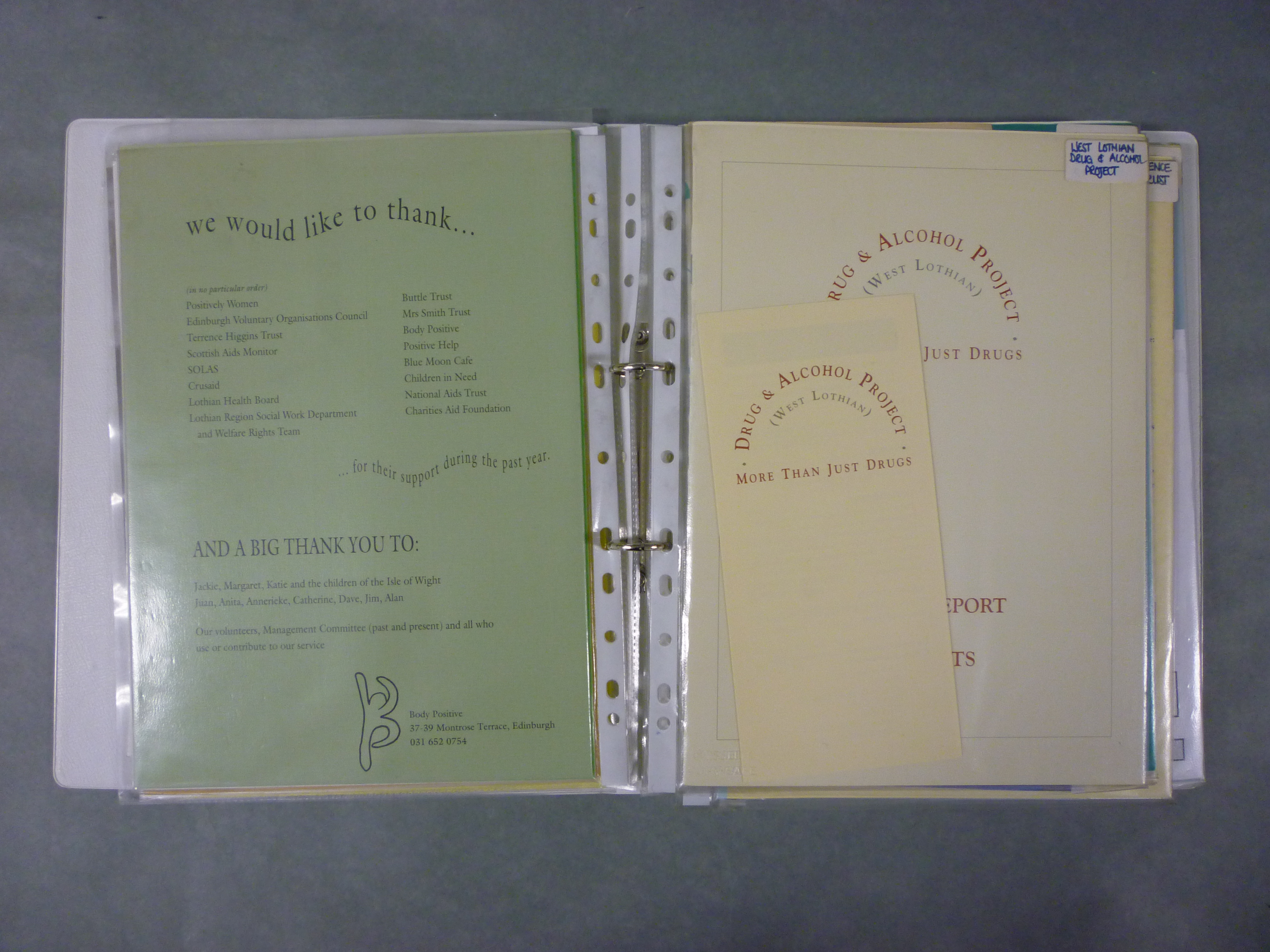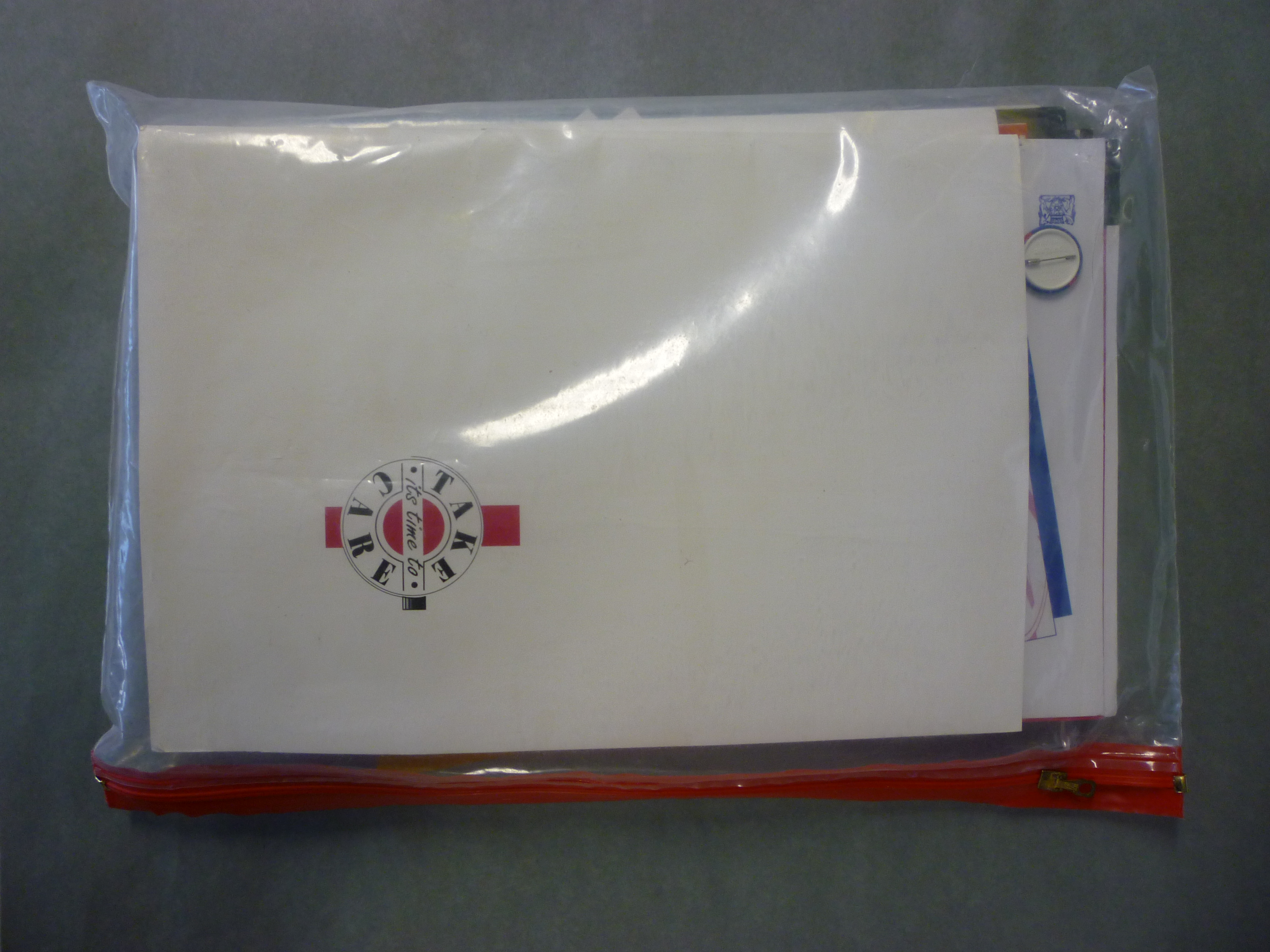Deterioration of plastics
Plastics are synthetic or semi-synthetic materials which can be processed to form a wide range of objects; from thin films and foams to large, high strength 3D objects. Plastics are based on polymers, which are large molecules made from many smaller ones joined together. There are roughly 50 different basic types of polymers used in approximately 60,000 plastic formations. The annual production of plastics has risen dramatically in the past 50 years, from 5 million tonnes in the 1950s to almost 100 million tonnes in early 2000. In 1982, the production of plastic surpassed that of steel and as such that year has signalled as the beginning of the ‘Plastic Age’.
Plastics in the HIV/AIDS Collections
The proliferation of plastics in contemporary life is reflected in this modern collection. The following plastics are frequently found.
- 3.5” floppy discs and CDs used to store information from a computer.
- Sound and image recordings such as vinyl records, VHS and audio cassette tapes.
- Photographic materials such as colour photographs, negatives and film reels.
- Condoms and condom/pill cases
- Balloons, bags, badges and watches used in health promotion campaigns
- Photocopies and faxes use plastics in the form of co-polymers mixed with carbon black fused to the surface of the paper.
- Plastic enclosures such as ring binders and poly-pockets previously used to store the material.

A severely degraded balloon that has become stuck to a business card
Degradation processes
Plastic degradation can be defined as any physical or chemical change that results in loss of the function and form of the object. Deterioration of plastics can be caused by physical and chemical factors.
Physical factors
Mechanical use of plastics: this relates to degradation caused handling or use of an object. For example the incorrect handling and repeated bending of a plastic doll may result in stress fractures or breakages.
Migration of additives: plastics contain additives called plasticizers that increase the flexibility of the object. However, as the object ages, the plasticizers evaporate causing it to become more brittle. This can be particularly problematic if the plasticizers are absorbed by another material in close contact with the object. The photograph below shows a window sticker that has degraded, releasing plasticizers which have in turn been absorbed by the plastic pocket it was previously stored in, resulting in deformation of the pocket.
A ‘no smoking’ window sticker that has released plasticizers as it has degraded. These have been absorbed into the poly pocket and resulted in deformation.
Chemical factors
The following factors provide the energy and the environment to promote destructive chemical processes which break the bonds within polymers resulting in loss of strength, increased brittleness and discolouration.
Light: ultraviolet light is most damaging to plastics and causes discolouration and increased brittleness. This is due to chromophores in the polymer chain absorbing light and catalysing photodegradation.
Heat: a change in temperature can change the physical characteristics of plastics. As the object is heated it will become more flexible and may distort when handled. The point at which this occurs changes depending on the polymer. Heat also increases the rate of chemical reactions in the object. Heating a plastic object also breaks the bonds in the polymer chain. This is known as depolymerisation and results in loss of strength.
Oxygen: plastics can react with directly with oxygen (auto-oxidation) or with ozone (oxidation). Ozone is a highly reactive material derived from the reaction of oxygen with ultraviolet light. These oxidation processes can, again, cause the breaking of bonds within a polymer and result in loss of strength and brittleness.
Effects of plastics in archives
Plastics not only form part of the HIV/AIDS collections, but are also used to house paper materials. For example, polypockets, ringbinders and spiral bindings are all used to collate and store loose paper in the collections. These plastics are not chemically stable and release damaging acids as they degrade over time. Office ringbinders can be especially problematic as they are frequently made from PVC (polyvinylchloride) which emits hydrochloric acid over time. This acid is readily absorbed by paper materials and can cause them to degrade.
Due to this, all paper materials have been removed from these folders, but reference samples have been kept separately so that the original look and function of the collection items can be recreated if necessary.
An example of a ring binder with poly pockets used to store loose paper in the HIV/AIDS collections
A zip lock bag used to store a collection of paper materials from the “Take Care” campaign
Designed by the Learning Technology Section, © The University of Edinburgh




